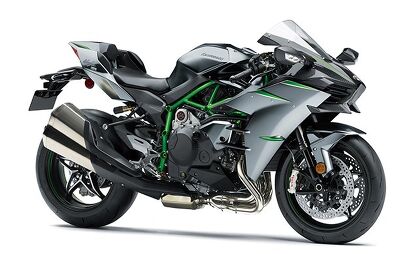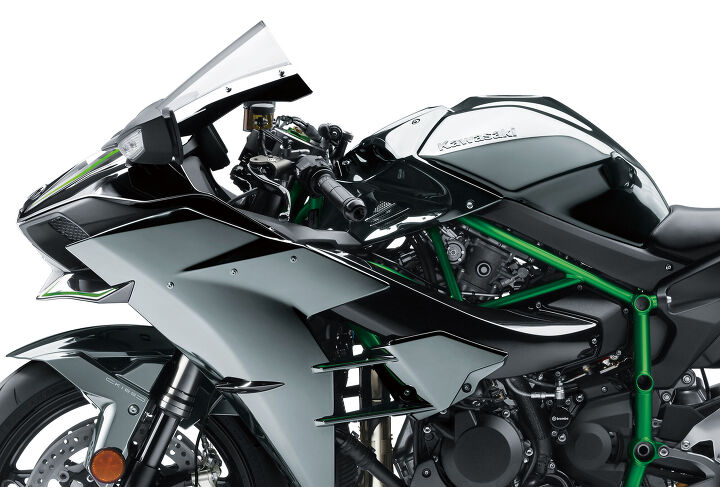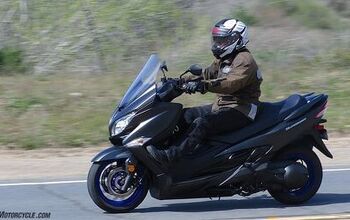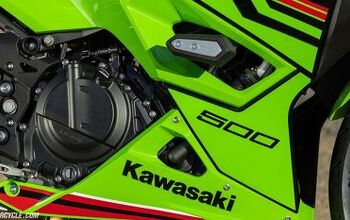How Does Kawasaki's Self-Healing Paint Work?

When Kawasaki announced updates for the 2019 Ninja H2, the headline-grabbing change was the 30-horsepower increase, raising the claimed maximum output to 227.8 hp. One change that drew much less attention was the new Highly Durable Paint treatment that Kawasaki claims is self-repairing.
That’s mainly because Kawasaki didn’t provide much detail about this self-healing paint, or how it works. The information Kawasaki provided the U.S. media including MO had just a brief paragraph at the very end of the press kit, reading:
NEW Highly Durable Paint
Also new is Kawasaki’s Highly Durable Paint (used on all non-carbon bodywork parts). The new paint features a special top coat that allows certain types of scratches to repair themselves, enabling the paint to maintain its high quality finish through normal wear and tear†. The self-healing is achieved through microscopic soft and hard segments within the top coat working like a chemical spring, creating a trampoline effect that absorbs many impacts.
† Notes:
- In some cases, it takes more than one week for recovery.
- The paint will not recover in the case of scratches caused by a coin or key, or zip fasteners.
The two notes explain some of the limitations of the self-healing paint, including a recovery time for “some cases” of more than a week. But just how fast can it heal most minor scratches? Kawasaki’s European press kit provides a bit more information:
Kawasaki Europe claim a much faster process than similar self-healing paints used in the automotive industry. Automakers like Mercedes-Benz, Nissan and Toyota have offered similar restorative paints on cars for quite some time, but Kawasaki claims a first for production motorcycles. Kawasaki Europe’s statement also suggests that “suitably warm ambient temperatures” will accelerate the process. So, what exactly is considered “suitably warm?”
Thankfully, we have some answers courtesy of patent applications Kawasaki filed with the U.S. Patent and Trademark Office. The patent filings describe how the self-healing paint can recover from scratches in just 10 to 20 minutes at ambient temperatures of just 26-30°C (79-86°F). That’s considerably faster than the self-repairing paint used on some cars which can take weeks.
Kawasaki’s patent applications aren’t for the self-healing paint itself, but rather for how it would be used on motorcycles. The patent filings reveal the self-healing paint (or more accurately, the self-healing top coat resin) is actually sourced from Natoco, a Japanese paint company.
Natoco showcased its self-healing material in 2014 at Display Week, a trade show for the electronic display industry. As the Nikkei Asian Review reported, Natoco showcased its potential for use on smartphones and other portable devices, with potential use in motor vehicles. Natoco’s Self-Healing Clear is a polymer-alloy material that prevents scratches by using what the company calls a curling effect and a trampoline effect.
The curling effect describes a smooth, slippery coating that resists damage by sliding any abrasive material along the surface without leaving a blemish. The trampoline effect describes how the resin contains soft elements that get indented (creating a scratch) and hard elements that cause the indentation to spring back into its original state much like a trampoline.
Kawasaki’s patent describes how a the self-healing layer is applied on top of another non-restorative top coat resin. This lower layer is harder than the self-repairing layer, to provide a second level of protection. Using a standardized pencil scratch hardness test, the lower layer can resist scratching by anything softer than an F pencil lead, whereas, the self-healing layer has a hardness of at least a 2B or B pencil (and preferably an HB or F pencil). Any softer, and the paint risks getting damaged by spilt gasoline. Too much harder, however, and the top coat loses its ability to self-heal.
Kawasaki’s patent application argues there is more need for self-healing paint for motorcycles than cars because a bike’s bodywork comes into frequent contact with a rider, whose riding gear may rub against the paint and create minor scratches. Areas near the ignition may also get scratched by keys or keychains. On a motorcycle with a dark paint job or a mirror-like sheen like the H2, minor scratches are particularly noticeable.
The self-healing paint is likely more expensive to apply than regular clear coats, which is why it makes sense to introduce it on bikes like the $28,000 Ninja H2 or $55,000 H2R. We may eventually see other bikes receive the self-healing treatment once the cost comes down.

Dennis has been a part of the Motorcycle.com team since 2008, and through his tenure, has developed a firm grasp of industry trends, and a solid sense of what's to come. A bloodhound when it comes to tracking information on new motorcycles, if there's a new model on the horizon, you'll probably hear about it from him first.
More by Dennis Chung










































Comments
Join the conversation
Looks like a transformer, why not act like one.
Why do we need to navigate 100 damn ads before getting to the comments section.
What a PITA!